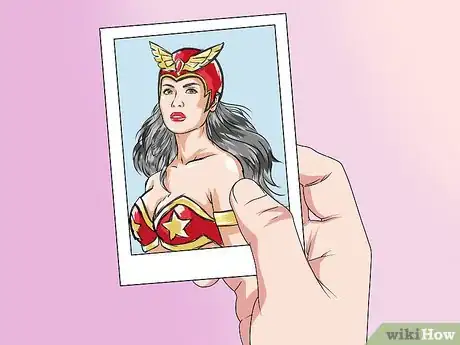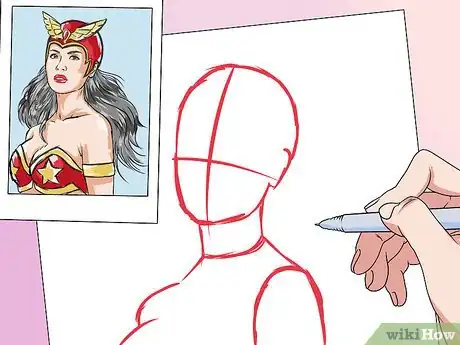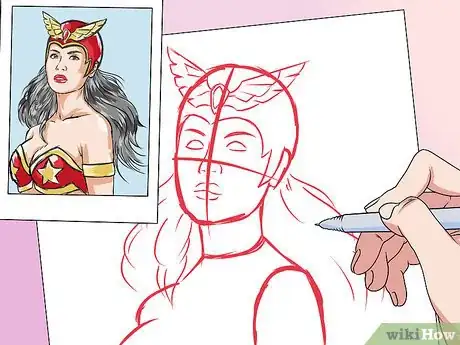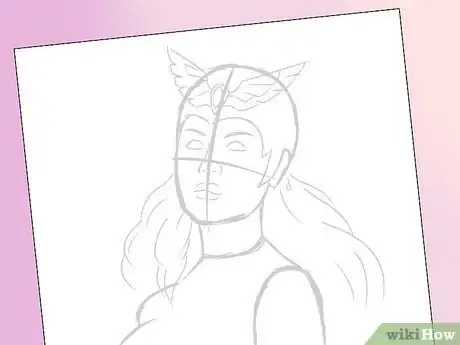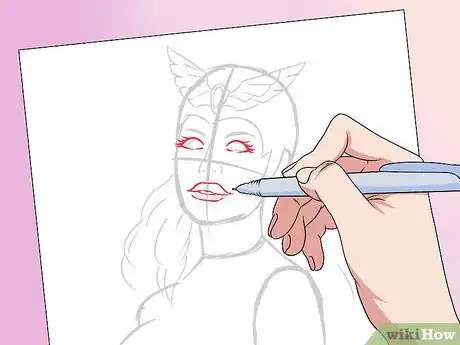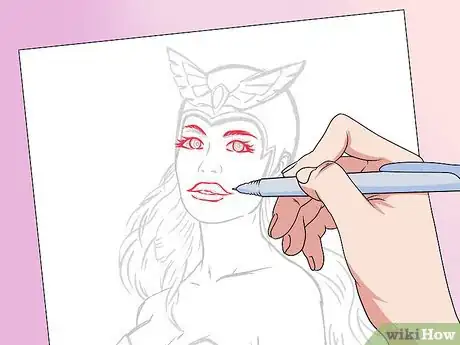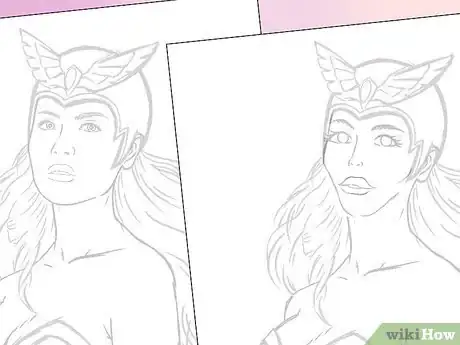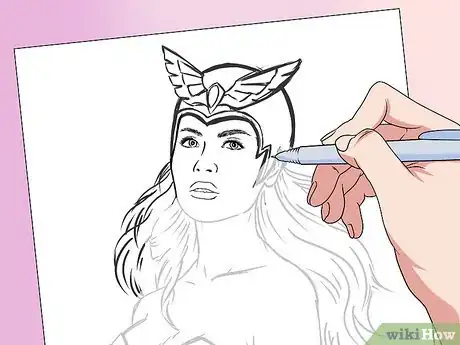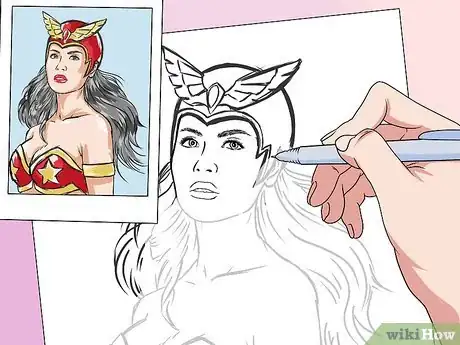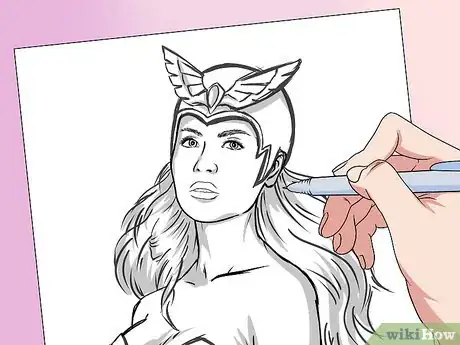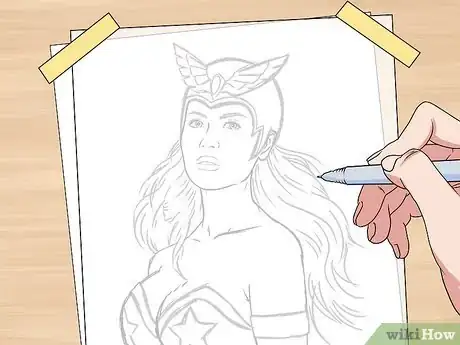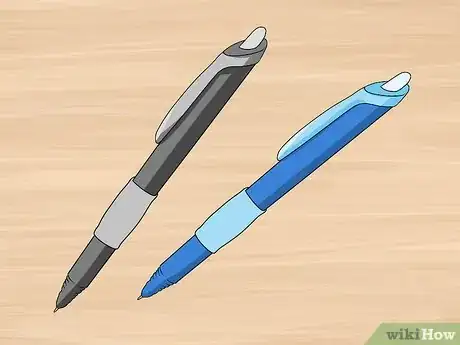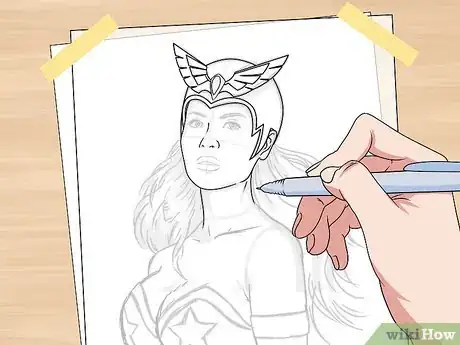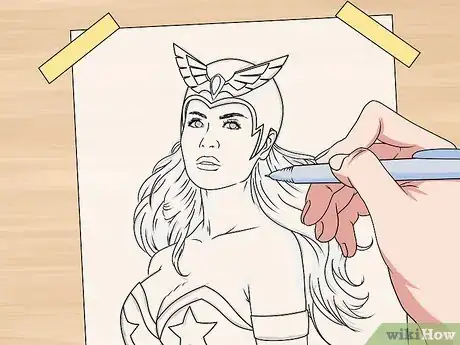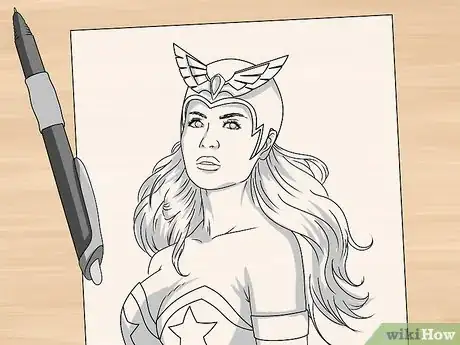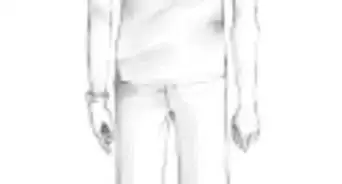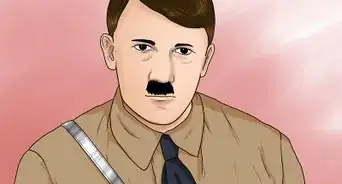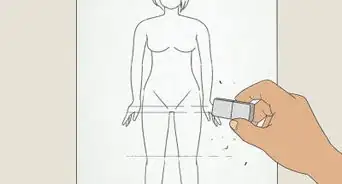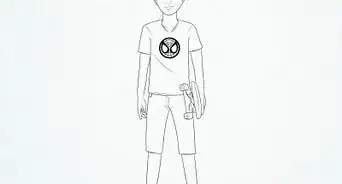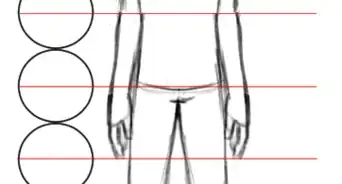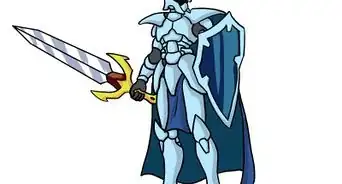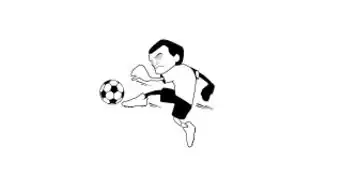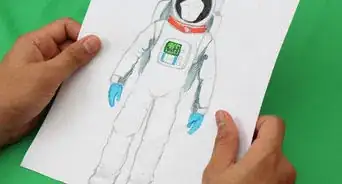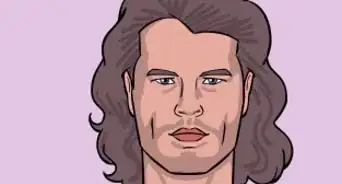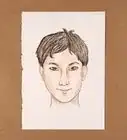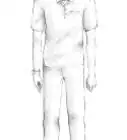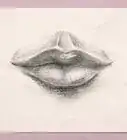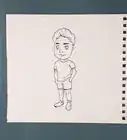This article was co-authored by wikiHow staff writer, Jessica Gibson. Jessica Gibson is a Writer and Editor who's been with wikiHow since 2014. After completing a year of art studies at the Emily Carr University in Vancouver, she graduated from Columbia College with a BA in History. Jessica also completed an MA in History from The University of Oregon in 2013.
There are 11 references cited in this article, which can be found at the bottom of the page.
This article has been viewed 276,437 times.
Learn more...
You've probably seen caricature artists at amusement parks or festivals and wondered how they make the art look so easy. Great caricature artists start by drawing quick thumbnail sketches that exaggerate a feature or two of their subject. Then they make a rough sketch that adds shading and builds the likeness so the person is instantly recognizable. To give your caricatures a professional quality, create a final caricature drawing that's as detailed or simplistic as you like.
Steps
Making a Thumbnail Sketch
-
1Choose a high-quality photo if you're working from reference. If you aren't caricaturing a live subject, pick a large photograph of your subject. Ensure that the reference photo is crisp and has good lighting. You should be able to easily see the definition in your subject's face.[1]
- If you're caricaturing yourself, ask someone to take a photo of you instead of taking a selfie. Holding the camera close to your face for a selfie will cause distortion which makes it hard to see your actual likeness.
-
2Draw the big shapes of your subject. Take your favorite drawing pencil and begin sketching the basic head shape of your subject on a large piece of paper. Then fill in the other shapes that form your subject's face, such as their eyes, nose, and mouth. Work quickly and keep the drawing basic.[2]
- Creating a rough outline for your thumbnail sketch will make it easier for you to emphasize some shapes and fill in details.
Tip: If you're struggling to find the big shapes for your subject, squint as you look to blur the details. This will help you determine large shapes that define the subject.
Advertisement -
3Add some detail to the subject to make it recognizable. You may already know which elements you want to exaggerate as you sketch or you might not know yet. Observe the things that make your subject unique and sketch them onto the basic head shape you created. Fill in basic outlines such as the hair and jawline.[3]
Tip: Try to spend between 2 to 3 minutes on your thumbnail sketch. Working quickly will prevent you from becoming emotionally invested in the drawing and you'll keep the thumbnail sketch simple.
-
4Choose which features you want to exaggerate. Look at your subject and pick 1 or 2 features that immediately jump out at you. For example, a person's eyes might droop down noticeably or their lips might be incredibly plump. Once you know the features to exaggerate, make them a little more extreme so they really stand out.
- For example, if you're caricaturing Barack Obama, you might choose to exaggerate his ears, chin, or forehead.
-
5Sketch the exaggerated features. See how far you can push the exaggeration when you sketch the 1 or 2 features you're going to emphasize. Keep in mind that you'll probably have to downplay other features so the exaggerated features fit. Don't be afraid to erase or start over if things aren't working out.
- For example, for your Barack Obama sketch, start by drawing a large forehead. Then, instead of making the eyes higher and larger near the forehead, keep them small and lower on the face. This will make the forehead stand out even more.
- Go back and sketch glasses or accessories after you've finished drawing the features.
-
6Make several thumbnail sketches. Create more than 1 sketch even if you really like how the first thumbnail sketch turned out. Try exaggerating different features on the other sketches or draw your subject from different angles or sizes. This can help you see what really works for your specific subject.[4]
- Sketch your subject showing different moods to see which captures the likeness you're going for. For example, you might sketch comedian Jim Carrey looking serious or thoughtful, but a sketch of Carrey with a wacky expression will be more recognizable.
Drawing the Rough Sketch
-
1Choose your favorite thumbnail sketch. Look over all of the quick thumbnail sketches you made of your subject and pick the one you like the best. It might be the one with the best exaggeration or likeness to your subject.[5]
- Keep the other sketches close by to use as references for the rough sketch. You should also have the reference photo at your work station so you can glance at it as you sketch.
-
2Outline the head shape and structure of the features. Use a pencil to carefully draw the shape of the head, exaggerating it as much as you like. Then sketch where the big features, such as ears or nose, are placed. Refer back to your thumbnail sketch to see what exaggerations you liked.[6]
- Take more time doing the rough sketch. This is your chance to improve and expand on the thumbnail sketches you made.
-
3Use the reference photo to fill in main features. Once you've made the basic outline for your subject, look at the reference photo as you draw in details of the face. Go slowly to ensure that you're placing the details where you want them. You can sketch as lightly or as firmly as you like when you work.[7]
- Include all of the facial features in your rough sketch. At this point, the subject should be completely recognizable with exaggerated features.
Tip: Although you can spend more time drawing than you did with the thumbnail sketch, try to complete the rough sketch within 20 to 30 minutes.
-
4Add shading to fill in the dimensions of your subject. Take your pencil or charcoal and fill in or cross-hatch parts of the face. Try to create shadows and depth so your subject's features stand out and look three dimensional.[8]
- It may be tempting to add small details, but try to focus just on quickly finishing the rough sketch before moving on to your final caricature drawing.
- Once you've finished your rough sketch, decide if you're happy with it and want to move on or if you'd like to try another rough sketch.
Finishing the Caricature
-
1Trace an abstract version of the rough sketch onto tracing paper. Tape a piece of tracing paper over your rough sketch. Then take a pencil and lightly draw over the outlines of the subject. You should now have a basic drawing that looks like a coloring page without any detail.[9]
- Drawing the abstraction will help you catch any drawing errors. For example, you might find that the eyes were too far apart when you made your rough sketch or maybe you see that you want to exaggerate a person's chin even more.
-
2Choose the medium you want to use for the final drawing. While you've probably been working in pencil up to this point, decide what medium you'd like to work with to make the final caricature. For example, use a blunt marker, charcoal, or fine-point pen.
-
3Trace over the abstract sketch and add contouring lines. Now tape the piece of paper you'd like to use for your final drawing over the abstract version you just made. Take your chosen medium and draw the subject's outline. Continue to add lines that give your caricature depth.[10]
- There's no right or wrong way to finish your caricature. Some artists prefer to work on facial features, such as the eyes or mouth, before moving on to hair or ears. Draw in any order you like.
-
4Finish rendering your subject. Be as detailed as you like when you add shading and features to your caricature. Some artists keep their caricatures minimal and cartoon-like while others want them to be as realistic as possible.[11]
- Spend as much time as you want when drawing your final caricature.
Tip: Look back to the reference photo and rough sketches you made. This will help you remember which features to exaggerate and which you may want to downplay.
-
5Finished.
Community Q&A
Did you know you can get answers researched by wikiHow Staff?
Unlock staff-researched answers by supporting wikiHow
-
QuestionHow can I practice caricature?
 wikiHow Staff EditorThis answer was written by one of our trained team of researchers who validated it for accuracy and comprehensiveness.
wikiHow Staff EditorThis answer was written by one of our trained team of researchers who validated it for accuracy and comprehensiveness.
Staff Answer wikiHow Staff EditorStaff AnswerIt helps to develop a strong sense of human anatomy so that you can build your caricatures from a realistic base. Try looking at pictures of people with interesting features, whether they’re celebrities, people in ads, or just random headshots you’ve found. Practice sketching the faces realistically, then look for ways to exaggerate the most distinctive features. Play around until you develop a style you like!
wikiHow Staff EditorStaff AnswerIt helps to develop a strong sense of human anatomy so that you can build your caricatures from a realistic base. Try looking at pictures of people with interesting features, whether they’re celebrities, people in ads, or just random headshots you’ve found. Practice sketching the faces realistically, then look for ways to exaggerate the most distinctive features. Play around until you develop a style you like! -
QuestionIs there a caricature app?
 wikiHow Staff EditorThis answer was written by one of our trained team of researchers who validated it for accuracy and comprehensiveness.
wikiHow Staff EditorThis answer was written by one of our trained team of researchers who validated it for accuracy and comprehensiveness.
Staff Answer wikiHow Staff EditorStaff Answer
wikiHow Staff EditorStaff Answer -
QuestionHow long does it take to draw a caricature?
 wikiHow Staff EditorThis answer was written by one of our trained team of researchers who validated it for accuracy and comprehensiveness.
wikiHow Staff EditorThis answer was written by one of our trained team of researchers who validated it for accuracy and comprehensiveness.
Staff Answer wikiHow Staff EditorStaff Answer
wikiHow Staff EditorStaff Answer
Things You'll Need
- Reference photograph
- Pencil or pen
- Colored pencils or crayons
- Paper
References
- ↑ https://www.proko.com/course-lesson/caricature-essentials-from-start-to-finish/assignments
- ↑ https://youtu.be/DzhMtUHa3E0?t=172
- ↑ http://theelearningcoach.com/elearning_design/thumbnail-sketches/
- ↑ https://youtu.be/EGutjSF8XLs?t=137
- ↑ https://youtu.be/cEauE_J5nqQ?t=63
- ↑ https://youtu.be/cEauE_J5nqQ?t=112
- ↑ https://youtu.be/cEauE_J5nqQ?t=191
- ↑ https://youtu.be/cEauE_J5nqQ?t=231
- ↑ https://youtu.be/Gn2e7QVBrPw?t=202
About This Article
To draw a caricature of someone, start by sketching the general shape of their head on a piece of paper. Then, look at the person, and choose one or two features that immediately jump out at you, like their nose, their lips, or their eyes. Once you've chosen one or two features, exaggerate them in your drawing. For example, if the person has particularly plump lips, you could draw their lips bigger than everything else on their face. Or, if the person has big ears, you could draw their ears sticking far out from the sides of their head. When you're finished, shade in your drawing to give it some dimension. To learn how to make quick thumbnail sketches when you're caricaturing someone, keep reading!
